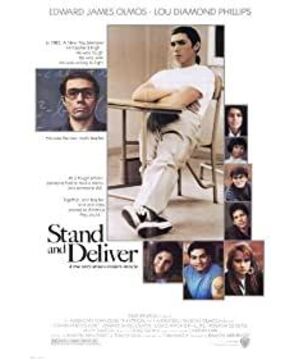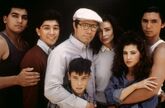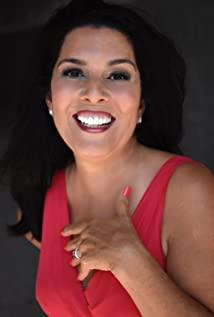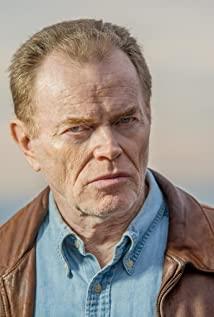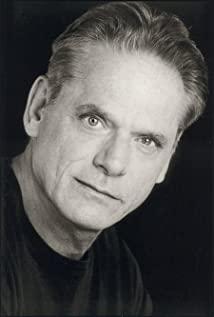Let’s talk about the background first, movies in the education industry. There are many movies with teachers educating students as the background, famous ones include: Dead Poets Society (1989), Good Will Hunting (1997)…
In addition, there are: Spring in the Cattle Class (2004) La cage aux rossignols (1945) [Old version of Spring in the Cattle Class] Good Morning, Miss Dove (1955) The Sound of Music Music (1965) Up the Down Staircase (1967) My Love My Teacher To Sir, with Love (1967) Goodbye, Mr. Chips (1969) Mr. Holland's Movement/Spring Breeze and Rain 1996/Life is Beautiful for You Mr. Holland's Opus (1995) Music of the Heart (1999) Finding Forrester (2000) Blackboard تخته سیاه: خانه (2000) There are books in the village Être et avoir (2002) Homeless to Harvard: The Liz Murray Story (2003) The School of Rock (2003) Mona Lisa Smile (2003) Four Minutes Vier Minuten (2006) Accepted (2006) Vitus (2006) Passionate Teacher The Ron Clark Story (2006) Freelance Writer/Street Diary Freedom Writers (2007) Wave Die Welle (2008) Call Me First Front of the Class (2008) An Education (2009) …
If you add the theme of extracurricular activities, there are also: Five Shaved Boys ファンシイダンス (1989) Five Sumo Boys シコふんじゃった. (1992) Five Pussy Boys ウォーターボーイズ (2001) Swinging Girl スウィングガールズ (2004) Linda! Linda! Linda! リンダリンダリンダ (2005) …
(Added by your friends, there are also:) Twenty-four Eyes Twenty-Four Hitomi (1954) The bottom hot girl ビリギャル (2015) The First Grader (2010) …
Among these educational-themed movies, the ones that teach music are better to shoot, such as the spring of the cattle-herding class, or the ones that teach sports, such as competitions. The more easily recognized are those who talk about life and ideals, such as the Dead Poets Society. The more difficult to shoot is the more boring basic subjects such as mathematics. Shooting exercises and calculation formulas is likely to suffocate the audience. Compared to the educational films above, this one falls into the hardest category to make: teaching math. It's actually quite difficult to learn mathematics well. This film spends a lot of space on how to memorize formulas. Whether reciting formulas can complete the main teaching of calculus, I think it is doubtful, but it is also understandable, because if you change the plot of how to do the exercises, it is estimated that the whole film will be much more boring.
As a 1988 film teaching mathematics, this film can be regarded as quite satisfactory. Because it is a plain route, there is not too much blood, burning arrangement, and there are not too many exciting montage clips. The main plot and progression are peaceful, and the story unfolds well. This is also thanks to a very bizarre true story.
The story is based on Jaime Escalante, a math teacher at Garfield High School in East Los Angeles, California, from 1974 to 1991. The qualifications of the students in the school are very average, and they are not motivated to learn. He recruited some of his classmates to give them a pre-college calculus class, trying to get these high school students to get pre-college credits to get into a top university. Usually only high-quality high schools in the United States will offer such courses for top students to take electives.
Mr. Jaime and his classmates went from being disliked at the beginning, to being suspected, to finally being recognized, like a roller coaster with many twists and turns. No amount of good screenwriters can make up such a dramatic plot. In the end, teacher Jaime and the students responded to their doubts through their own performance.
The film does not need to be over-created, it is enough to express the real process properly. The two things that moved me the most in the film were:
One is to work hard to fight hard. Teacher Jaime, both the movie and the story prototype, emphasizes one point: work hard, strive for, and struggle. The second is a line in the play: "My biggest worry is the loss of confidence in the system when the students are finally able to become self-reliant members." There are several similarities between this film and teacher-type films: 1. At the beginning, teachers and students are unrecognized little people, in the position of underdog type, and then in the development of the story, they are constantly questioned, ridiculed and despised . And through their hard work and struggle, they gradually found their way. 2. In continuous learning, both teachers and students make continuous progress. Some progress is so small that outsiders find it insignificant. And some progress is that outsiders do not understand and do not know, but they themselves know. And these incremental progress helped them achieve qualitative improvement. 3. There is positive feedback on their efforts and the progress they make. So the more they learn, the happier they are, and the more they learn, the more progress they make. After the film was released, Jaime said that 90% of the film was real and 10% made up. Exaggerated things include:
①More than 10 students passed the exam in one year, but it took several years to achieve the scale. In reality, this is an experimental class. In the first year, only 5 students were taught, and 3 were passed. In the second year, 9 students were taught, and 7 were passed. Then in the third year it started to increase. Therefore, it was only when the fourth session was implemented that more than 10 students passed the exam at one time.
②A student in the play said that he did not understand the 99 multiplication table, and then in this class, he learned calculus within one year. Jaime said that if a student does not understand the 99 multiplication table, there is no way for him to learn calculus within a year.
View more about Stand and Deliver reviews


